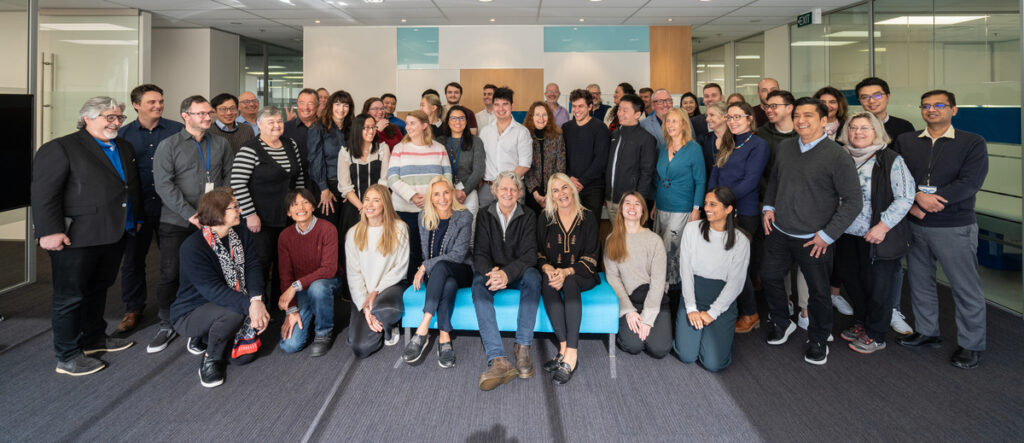Professor Paul M Young;
Head of Respiratory Technology at the Woolcock Institute of Medical Research and Professor in Respiratory Technology at the School of Medicine, University of Sydney
Background: Chronic sinus infection occurs regularly in patients with chronic rhinosinusitis (CRS). In Australia alone, over 1.9 million cases were diagnosed between 2010-11, with symptoms being prevalent in ~16% of the general population. Furthermore, acute sinusitis occurs in up to 4.6% of young adults. When swelling in CRS obstructs the normal draining of sinuses, aerobic and anaerobic bacterial can setup-shop’ and establish biofilm colonies that are difficult to remove with current therapies. In many cases surgical intervention is required. CRS results in hyper-mucosal secretion, inflammation and severe discomfort and pain.
Market: There is no current marketed nasal aerosol medicine for the treatment of CRS that specifically targets the sinuses or an efficient device capable of specific targeting. Current approaches to delivery include the administration of antibiotics, mucolytic and steroids. Administration is either conducted using nasal pumps or modified nebulisers; originally developed for lung-targeting’. These approaches result in virtually no access to the target site, and thus limited therapeutic efficacy.
The only competitor has been reported to achieve ca. 6.5% sinus deposition and has long dosing times (4min/nostril). Furthermore, there is the potential for lower respiratory tract deposition since this device produces a fine aerosol of irrespirable size.
AFT approach: AFT Pharmaceuticals has developed a novel device that specifically targets the sinuses and this has been shown to be highly efficient at generating an aerosol of suitable size for nasal drug delivery (> 10 µm). Other researchers have established that a pulsed aerosol is required for nasal delivery and AFT have subsequently demonstrated that it is possible to generate a pulsed frequency cloud’ suitable for para-sinus targeting. To our knowledge, no such device exists on the market than can generate pulsed aerosol clouds that have a suitable size for nasal targeting with high delivery rates. Specifically, the AFT device has the potential to deliver a dose in seconds rather than minutes, making it comparable with nasal pumps rather than nebuliser technology.
In-line laser diffraction studies using an AFT prototype have shown a narrow particle size could be achieved over a number of pulses. Under test conditions , the output rate was 20x that of the commercially available device. Additionally, two other commercial nebulizers were tested and it was demonstrated they were not suitable for nasal deposition. Ultimately, this makes the AFT device unique in the market for nasal drug delivery and for the treatment of CRS and other upper respiratory tract diseases.
About Paul M Young
Professor Young has made a significant contribution in the field of advanced drug delivery and inhalation science. His expertise lies in the areas of drug formulation, characterisation and device development. He has published more than 150 peer reviewed international journal articles (>2600 citations), 5 patents, 13 book chapters and in excess of 100 conference proceedings within the field and has an H-index of 28 and 5-year i10 index of >78. Paul collaborates with both academia and industry on an international level and has attracted >$15 million dollars in research funding within the area of inhalation medicine.
Professor Young is an Australian Research Council Future Fellow and is appointed on the Australian Research Council College. He is a Chartered Chemist of the Australian Royal Society of Chemistry and has been an external advisor for many national and international Pharmaceutical companies, the TGA and legal firms. Paul is on the editorial editorial board of range of journals including Pharmaceutical Research, Journal of Pharmacy and Pharmacology, Drug Development and Industrial Pharmacy, AAPS PharmSciTech, Inhalation magazine and Respiratory Drug Delivery. Furthermore, Paul has given invited international talks on many occasions and has been on the organising committees many international science conferences.
Professor Young was a founding Director of Nanopharm Ltd in the UK and is currently a Director of Pulmatix Pty Ltd in Australia, a specialist contract drug development and testing company.
Declaration of Interests
Paul Young received no financial support for this commentary. Pulmatix Pty Ltd (of which he is a Director) has received income for contract testing of a prototype AFT device. Paul is a chief investigator in a NH&MRC grant of which AFT is a partner company.
Disclaimer
The views and opinions expressed in this commentary are those of the author. In no respect shall the author incur any liability for any damages connected to the use of this commentary whether or not loss was sustained from, or arose out of, the results of this commentary.





